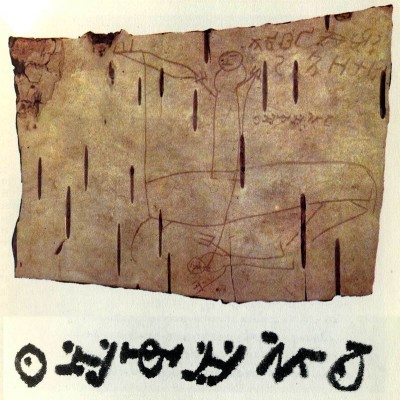The Writing Material
Manuscripts were originally written on specially treated animal skin. In Old Russia this leather had several names: it was called kozha (skin), telyatina (calf skin), and later khartia (this material was usually prepared from calf skins). The accepted term for this material is pergamen (parchment), named after the town of Pergamum, where its preparation is said to have been perfected in the second century B.C. It was replaced by paper later. The borderline between the use of parchment and paper lies roughly at the end of the fourteenth century and the beginning of the fifteenth, but it is not a clear one. Paper was imported into Old Russia. There is evidence that under Ivan the Terrible and in the seventeenth century paper was also produced in Russia. Paper usually had watermarks which can be seen when the sheet is held up against the light. During the fabrication of paper from old rags the pulp was drained on a wire mesh. The finished sheets of paper retained the marks from the mesh. Paper manufacturers put the watermark of their factory on the mesh. When the mesh wore out it was replaced and the watermarks themselves were changed. From these watermarks one can establish the date when the paper was manufactured and roughly when the manuscript was copied on the sheet. There are many albums and guides to help one identify a watermark and from it the period to which it and, consequently, the manuscript written on paper with this watermark belong.
 History of Russian Literature
History of Russian Literature

